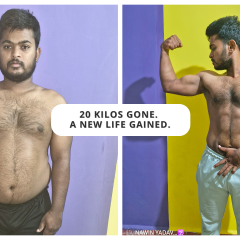 Many people use food as a coping mechanism, but when does it cross the line into something more serious like Binge Eating Disorder (BED)? Let’s explore the key differences.
Many people use food as a coping mechanism, but when does it cross the line into something more serious like Binge Eating Disorder (BED)? Let’s explore the key differences.
What is Emotional Eating?
Emotional eating is when we eat in response to feelings rather than physical hunger. It is often triggered by stress, boredom, sadness, or even happiness.
Signs of Emotional Eating:
- Eating in response to stress, sadness, boredom, or anxiety.
- Craving specific comfort foods (e.g., sweets, crisps, or junk food).
- Eating even when not physically hungry.
- Feeling temporarily better after eating, but then experiencing guilt or regret.
- Occurs occasionally and in smaller portions.
While emotional eating is a common behaviour, it becomes a concern when it happens frequently and disrupts your relationship with food.
What is Binge Eating Disorder (BED)?
Binge Eating Disorder (BED) is a serious mental health condition characterised by frequent, uncontrollable episodes of eating large quantities of food. Unlike emotional eating, BED involves a sense of loss of control and distress around food.
Signs of Binge Eating Disorder:
- Frequent episodes of eating large amounts of food within a short time.
- Eating even when uncomfortably full or not hungry.
- Feeling out of control during eating episodes.
- Eating very quickly and secretly, due to shame or embarrassment.
- Feeling distressed, ashamed, or guilty after binge episodes.
- Episodes occur at least once a week for three months (as per clinical diagnosis).
Unlike emotional eating, BED is a compulsive disorder that can have serious long-term effects on both physical and mental health.
Key Differences Between Emotional Eating & Binge Eating Disorder
Factor |
Emotional Eating |
Binge Eating Disorder (BED) |
|
Triggers |
Stress, boredom, sadness |
Can be emotional or compulsive without a clear trigger |
|
Portion Size |
Small to moderate |
Large amounts of food in one sitting |
|
Control Over Eating |
Some level of control |
Complete loss of control |
|
Frequency |
Occasional |
Recurring (at least once a week for 3+ months) |
|
Aftermath Feelings |
Mild guilt or regret |
Intense guilt, shame, distress |
|
Eating Speed |
Normal |
Very fast, often secretive |
|
Physical Consequences |
Rare |
Can lead to obesity, diabetes, heart issues |
How to Manage Emotional Eating & Binge Eating Disorder
Whether you struggle with occasional emotional eating or suspect you may have BED, there are steps you can take to regain control of your eating habits.
- Recognise Your Triggers
Keep a food and mood journal to identify what emotions drive your eating habits. Do you eat when you’re stressed? Lonely? Bored? Understanding your triggers is the first step to making changes.
- Find Healthier Coping Mechanisms
Instead of turning to food, try activities like:
-
- Exercise – A natural mood booster.
- Journaling – Helps process emotions.
- Meditation or Deep Breathing – Reduces stress and anxiety.
- Social Connection – Call a friend or spend time with loved ones.
- Eat Mindfully
-
- Pay attention to hunger cues – eat when you’re physically hungry, not emotionally hungry.
- Practise portion control – serve food on a plate rather than eating straight from a packet.
- Slow down while eating – chew properly and enjoy your food.
- Professional Help for BED
-
- Cognitive Behavioural Therapy (CBT) – A proven method to change binge-eating behaviours.
- Mindful Eating Therapy – Helps individuals reconnect with hunger and fullness cues.
- Support Groups & Counselling – Having a support system makes recovery easier.
- Medical Interventions – In some cases, doctors may prescribe medication to help manage BED.
Occasionally turning to food for comfort is normal, but when it becomes a frequent coping mechanism or involves loss of control, it’s important to take action. Understanding the difference between emotional eating and Binge Eating Disorder is the first step toward a healthier relationship with food.
Have you ever struggled with emotional eating? What strategies have helped you? Share in the comments!
#BeTheForce
Disclaimer: The information provided in this blog is for general awareness and educational purposes only. It is not intended to replace professional medical advice, diagnosis, or treatment. Always consult a qualified healthcare provider for personalised medical guidance or concerns related to your health.




Leave a Reply